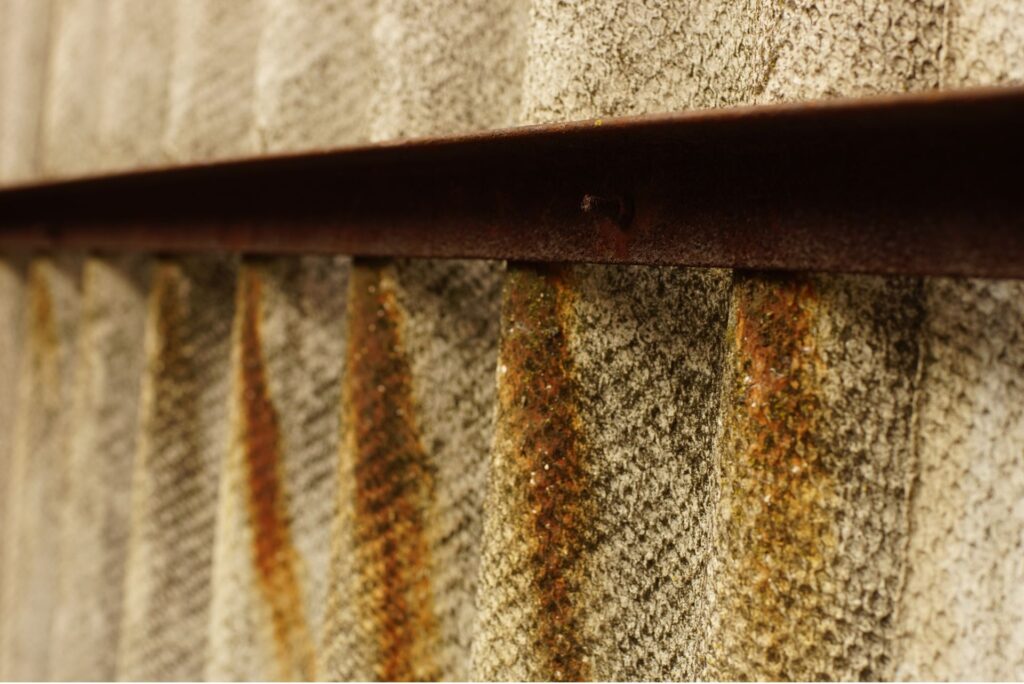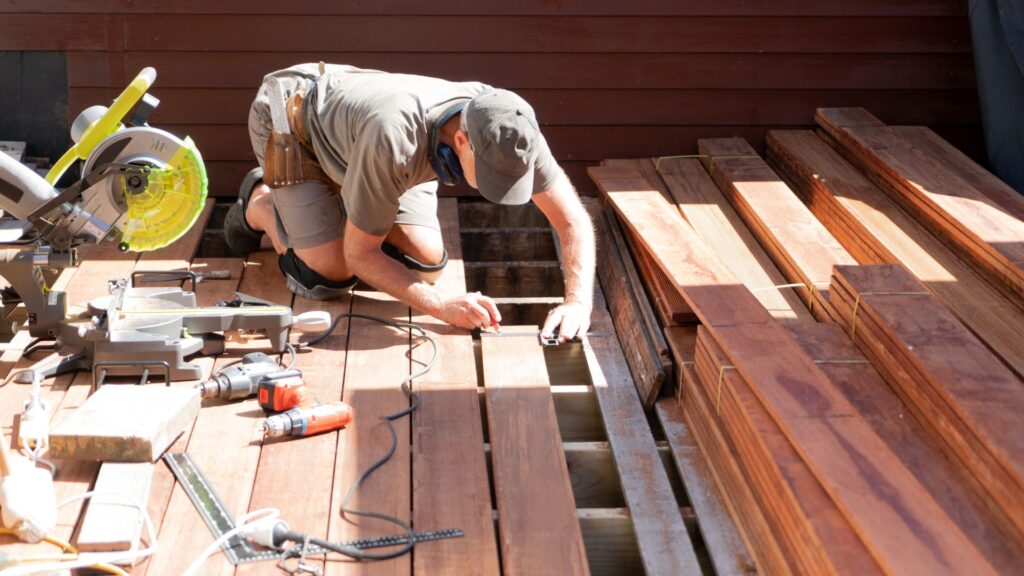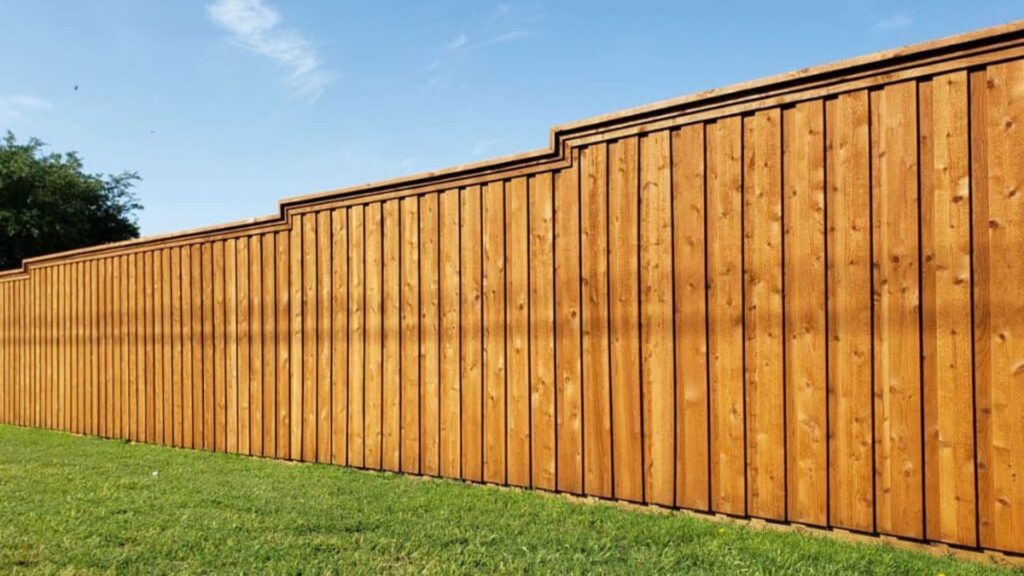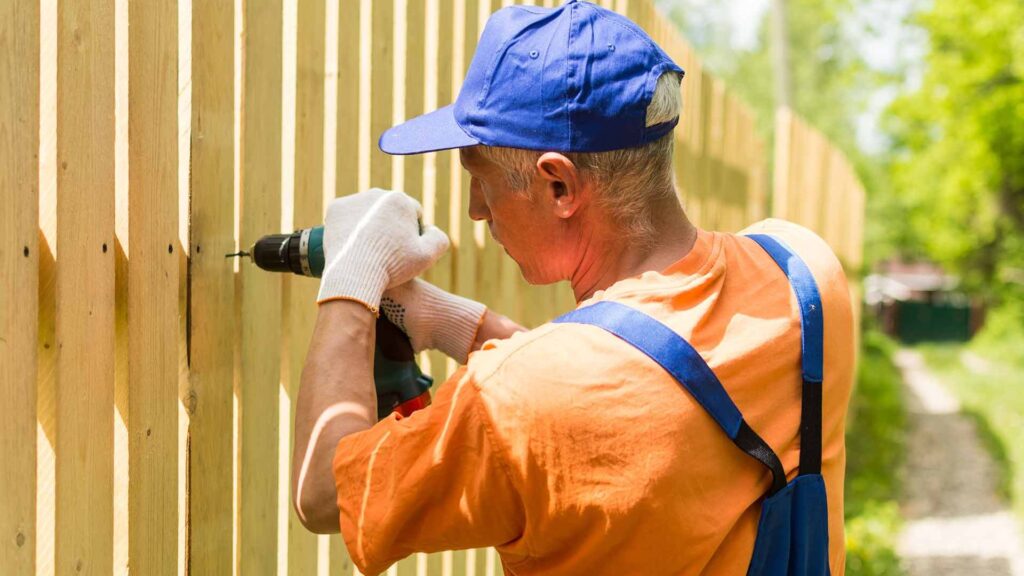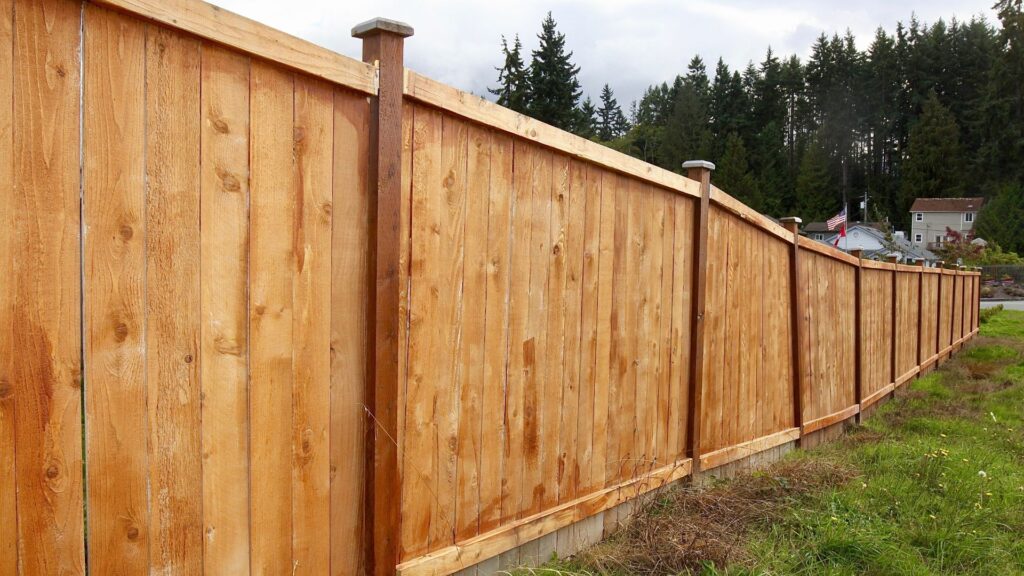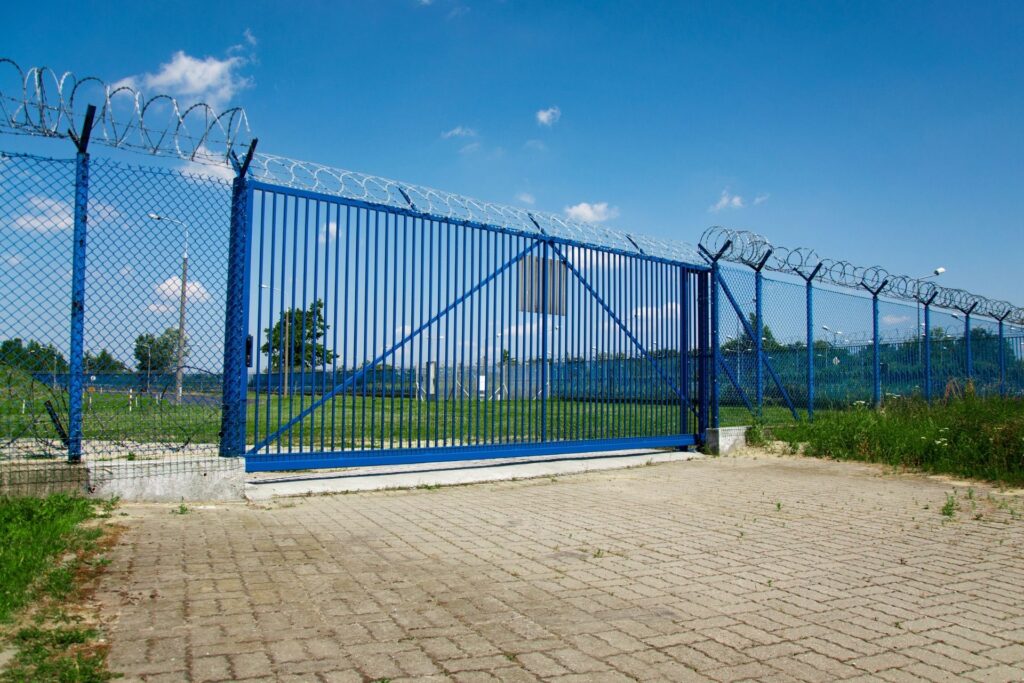Welcome to our comprehensive guide on asbestos fence removal, a critical topic for homeowners and property managers alike. Asbestos once praised for its durability and fire resistance in construction, now poses significant health risks when disturbed. This guide is crafted to navigate you through identifying asbestos in your fencing, understanding the removal process, including legal and safety considerations, and demystifying the costs involved. Our goal is to equip you with the necessary knowledge to make informed decisions about asbestos fence removal, ensuring the safety of your property and, most crucially, the health of you and your loved ones. Whether you’re dealing with an old fence suspected of containing asbestos or simply keen to learn about the removal process and its costs, you’re in the right place. Let’s dive into the world of asbestos fence removal together, armed with the right information to tackle this challenge safely and effectively.
On average, the cost ranges from $50 to $150 per linear meter, depending on the complexity of the removal, accessibility of the site, and local disposal fees. It’s crucial to hire licensed professionals for the job to ensure safety and compliance with local regulations. These experts can provide a more accurate estimate after a site inspection. Remember, the health risks associated with asbestos make professional removal a wise investment.
- Understanding Asbestos In Fencing
- Identifying Asbestos In Your Fence
- Legal And Safety Considerations
- The Asbestos Fence Removal Process
- Factors Influencing Asbestos Fence Removal Price
- How Much Does Asbestos Fence Removal Cost?
- Financing And Assistance For Asbestos Removal
- Choosing The Right Asbestos Removal Company
- Preparing For Asbestos Fence Removal
- FAQs: About Asbestos Fence Removal Price
- Conclusion
Understanding Asbestos In Fencing
Asbestos once hailed for its remarkable fire-resistant and insulating properties, found its way into numerous construction materials, including fencing. However, its use came to a halt when the severe health risks associated with asbestos exposure became undeniable. Understanding the presence of asbestos in fencing, the types of fences that may contain it, and the health implications are crucial for homeowners, contractors, and anyone involved in property maintenance or renovation. This guide aims to provide a detailed overview of asbestos in fencing, blending historical insights with practical information to ensure safety and compliance.
Brief History of Asbestos Use in Construction/Fencing
The use of asbestos dates back thousands of years, but its incorporation into construction materials peaked in the 20th century. Asbestos was added to products to enhance strength, durability, and resistance to fire and heat. Fencing materials, particularly those installed before the 1980s, often contained asbestos as a component to increase their longevity and fire resistance. The realization of asbestos’s health hazards led to strict regulations and a decline in its use. Today, the presence of asbestos in older fencing poses a risk that must be managed during demolition, renovation, or maintenance work.
Types of Fences That May Contain Asbestos
Asbestos-containing fencing materials were predominantly used in two forms: flat sheet and corrugated sheet fences. These sheets, made from a mixture of cement and asbestos fibers, offered a cost-effective and durable solution for residential, industrial, and commercial boundaries. Flat sheet fences were smooth and used for privacy screens or decorative purposes, while corrugated sheets, known for their wavy appearance, were commonly used for their strength and resistance to the elements. Identifying these materials in existing structures is essential for safe handling and removal.
Health Risks Associated with Asbestos Exposure
The health risks of asbestos exposure are well-documented and severe. Inhalation of asbestos fibers can lead to serious respiratory conditions, including asbestosis, lung cancer, and mesothelioma a rare form of cancer primarily affecting the lining of the lungs or abdomen. The risk increases with the amount and duration of exposure, making it crucial to avoid disturbing materials that may contain asbestos. Proper safety measures, including professional assessment and removal, are vital to prevent exposure during fence repair, removal, or renovation activities.
The legacy of asbestos use in construction and fencing materials is a concern that requires awareness and appropriate action. Understanding the history of asbestos use, recognizing the types of fences that may contain it, and comprehending the health risks involved are fundamental steps in managing and mitigating the dangers it poses. Whether you are a homeowner, a construction professional, or involved in property maintenance, prioritizing safety and adhering to regulations when dealing with asbestos-containing materials is paramount.
This comprehensive guide underscores the importance of informed handling and the need for vigilance to protect health and ensure safety in environments where asbestos-containing fencing may be present. By staying informed and seeking professional guidance, we can navigate the challenges posed by legacy asbestos use and create safer, healthier spaces for all.

Identifying Asbestos In Your Fence
When you’re dealing with older homes or structures, one of the hidden dangers you might encounter is asbestos. This hazardous material, once widely used in building materials due to its fire-resistant properties, can pose serious health risks if its fibers are inhaled. Among the various places where asbestos can lurk, fencing materials in homes built before the 1980s are potential hotspots. Section 2 dives deep into the critical task of identifying asbestos in your fence, providing valuable insights and guidance to ensure your safety and health are not compromised.
Visual Indicators of Asbestos in Fencing Materials
Identifying asbestos in fencing materials can be tricky, as it’s not always visible to the naked eye. However, some visual indicators can suggest its presence. Asbestos-containing fences often show signs of aging differently than fences made with newer, safer materials. Look for:
- Cement sheets or panels that have a corrugated, flat, or patterned appearance.
- A weathered look that’s not consistent with wood or metal deterioration.
- Small, visible fibers on the surface of the fence panels, especially if they appear frayed or damaged.
These signs are not definitive proof of asbestos but warrant further investigation. Due to the serious health risks associated with disturbing asbestos fibers, it’s crucial to proceed with caution.
The Importance of Professional Testing for Asbestos
While visual inspection can raise suspicions, the only way to confirm the presence of asbestos is through professional testing. This step is vital for several reasons:
Health Safety: Disturbing asbestos-containing materials can release harmful fibers into the air, posing a risk to anyone in the vicinity.
Regulatory Compliance: Many regions have strict regulations regarding asbestos management, including identification, removal, and disposal.
Peace of Mind: Knowing for sure whether or not your fencing contains asbestos allows you to make informed decisions about its safe handling or removal.
Engaging professionals experienced in asbestos testing ensures that samples are taken safely and analyzed accurately, providing you with reliable results.
How to Safely Take a Sample for Testing or Why It’s Best to Consult Professionals
There are circumstances where taking a sample yourself might be considered, but this comes with significant caveats. Here’s why consulting professionals is often the best course of action:
Safety Protocols: Professionals have the necessary training, equipment, and protective gear to take samples without releasing harmful fibers.
Accuracy: They know exactly where and how to take samples to get the most accurate results.
Legal and Environmental Compliance: Professionals are familiar with local laws and regulations, ensuring that the sampling process complies with all legal requirements.
If you’re advised and choose to take a sample yourself, it’s imperative to follow strict safety guidelines, including wearing appropriate protective gear, using the right tools, and following detailed instructions to minimize the risk of fiber release. However, given the risks involved, the recommendation leans heavily towards leaving this task to the experts.
Identifying asbestos in your fencing is a task that requires a keen eye and professional intervention. While there are visual cues that might suggest the presence of asbestos, only through professional testing can you be certain. Given the health risks associated with asbestos exposure, it’s paramount to prioritize safety over convenience or cost. Consulting with professionals not only ensures accurate identification but also complies with health and safety regulations, ultimately providing peace of mind.

Legal And Safety Considerations
Navigating the complexities of asbestos removal requires a thorough understanding of legal and safety considerations. Asbestos, once a popular construction material due to its fire resistance and insulation properties, is now recognized for its health risks, particularly in causing lung diseases, including cancer. This realization has led to strict regulations governing its handling and removal, underscoring the importance of compliance and safety.
Understanding Asbestos Removal Regulations
The first step in planning asbestos removal is to familiarize yourself with the regulations surrounding this hazardous task. Asbestos removal laws vary significantly from one jurisdiction to another, reflecting the local government’s commitment to public health and safety. These regulations are in place to ensure that asbestos is handled and disposed of in a manner that minimizes exposure to airborne fibers, known to cause serious health issues.
Homeowners and property managers must check local laws and guidelines before initiating any asbestos removal project. This includes understanding the requirements for notification, removal procedures, and disposal methods. Some regions require a thorough inspection by a certified asbestos professional before any work begins, ensuring that all asbestos-containing materials (ACM) are identified.
Hiring Licensed Professionals
The complexities and dangers associated with asbestos removal make it imperative to hire licensed professionals. Certified asbestos removal companies have the expertise, experience, and equipment to safely remove and dispose of asbestos materials. These professionals are trained in the latest safety protocols and are equipped with protective gear to minimize exposure risks.
Choosing a licensed asbestos removal contractor not only ensures compliance with local regulations but also provides peace of mind. These professionals are knowledgeable about the legal requirements for notifying local authorities, safely removing ACM, and disposing of it according to environmental regulations.
Personal Safety Measures
For individuals living in homes or working in buildings where asbestos-containing materials are present but not currently being removed, personal safety measures are essential. Disturbing ACM can release asbestos fibers into the air, posing a significant health risk. Here are some key safety tips:
- Avoid disturbing materials that you suspect contain asbestos.
- Regularly check asbestos-containing materials for signs of wear or damage. If you find damaged areas, do not attempt to repair them yourself. Contact a licensed professional.
- Follow all safety guidelines provided by asbestos removal professionals, including staying out of designated work areas during the removal process.
Understanding the legal and safety considerations is crucial in planning and executing an asbestos removal project. By familiarizing yourself with local regulations, hiring licensed professionals, and following personal safety measures, you can ensure a safe and compliant removal process. This approach not only protects the health of those directly involved in the removal process but also the broader community by preventing the release of harmful asbestos fibers into the environment.
In addressing asbestos removal, it’s essential to strike a balance between regulatory compliance and practical safety measures. Through informed decision-making and professional involvement, we can mitigate the risks associated with asbestos, ensuring the health and safety of all involved.
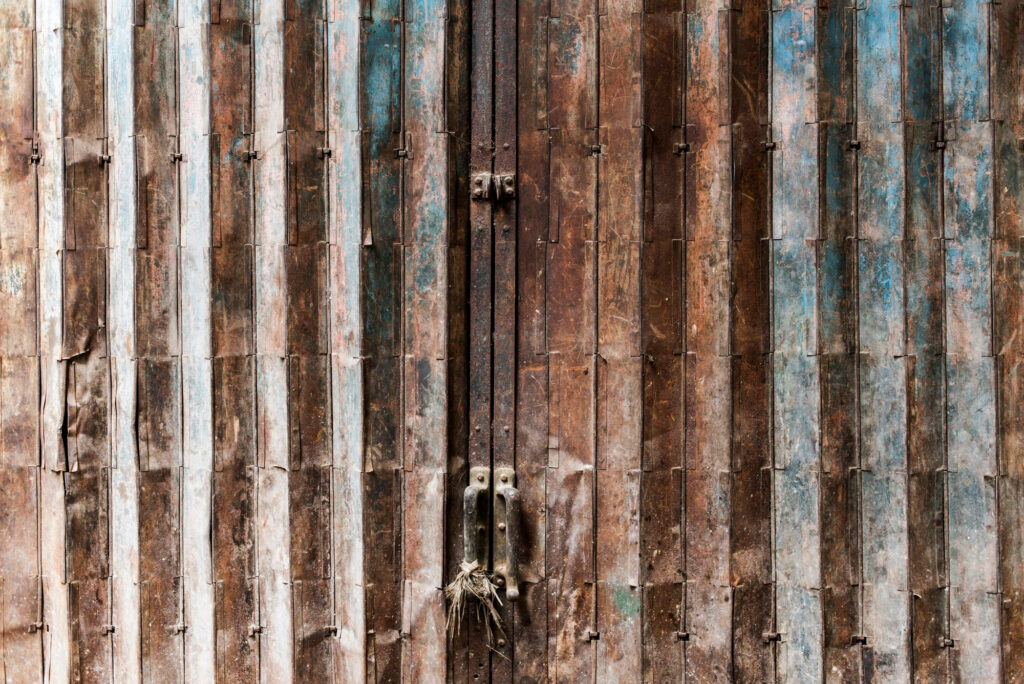
The Asbestos Fence Removal Process
Removing an asbestos fence is not just a matter of tearing it down. It involves a meticulous, step-by-step process carried out by professionals to ensure safety and compliance with environmental regulations. Here’s a closer look at what the process entails:
Initial Inspection and Testing
Before any removal work begins, a thorough inspection is crucial. This initial step involves professionals coming to your property to assess the condition of the fence and determine whether asbestos is present. Since asbestos fibers are microscopic and cannot be seen with the naked eye, samples of the fence material are sent to a lab for testing. This phase is essential for planning the removal process accurately and safely.
Planning and Obtaining Necessary Permits
Once asbestos is confirmed, the next step involves meticulous planning and obtaining the necessary permits. Asbestos removal is heavily regulated, and for good reason. Asbestos fibers can pose serious health risks when inhaled, leading to conditions such as asbestosis, lung cancer, and mesothelioma. Professionals will design a removal plan that minimizes the risk of fiber release and ensures that the work complies with local, state, and federal regulations. Part of this planning phase includes securing any permits required by law to carry out the removal safely and legally.
The Removal Process: Preparation, Removal, and Disposal Methods
The removal process is comprehensive, beginning with the preparation of the site. This may involve setting up containment areas to prevent asbestos fibers from spreading and ensuring that workers wear appropriate protective gear. The actual removal involves carefully taking down the asbestos-containing materials and securely packing them for disposal.
Disposal is a critical part of the process, as asbestos waste requires special handling. It must be taken to a certified facility that can safely dispose of hazardous materials, ensuring that it does not pose a risk to public health or the environment.
Post-Removal Cleanup and Safety Checks
After the removal, a thorough cleanup of the site is essential to remove any remaining asbestos fibers from the area. This may include vacuuming with HEPA filters and wiping down surfaces. A final safety check, often involving air monitoring, ensures that the area is safe for reoccupation. This post-removal phase is crucial to ensure that the property is not only free from asbestos but also safe for inhabitants and the environment.
Why This Matters
Understanding the asbestos fence removal process is vital for homeowners, business owners, and anyone dealing with asbestos in their property. It underscores the importance of professional handling and why cutting corners can lead to severe health risks and legal ramifications.
When considering asbestos removal, choosing a certified and experienced team to carry out the work is crucial. Their expertise ensures that the process is performed safely, efficiently, and in compliance with all regulatory standards, protecting your health and the environment.
By following these steps, you can navigate the complexities of asbestos fence removal with confidence, knowing that you’re taking the right measures to ensure a safe and compliant resolution to asbestos concerns on your property.

Factors Influencing Asbestos Fence Removal Price
When considering the removal of an asbestos fence from your property, understanding the factors that influence the cost is essential. The price of asbestos fence removal can vary widely based on several key factors, which we will explore in this detailed guide. This information is not only crucial for planning and budgeting but also helps in finding the right professionals for the job.
Size and Complexity of the Fencing Area
The first significant factor is the size and complexity of the area where the asbestos fencing is installed. As you might expect, larger areas require more labor and materials for safe removal, which increases the cost. Additionally, the complexity of the job plays a vital role. Fences that are intricately woven into the landscape or those that involve complicated structures for support will demand more time and specialized techniques to dismantle safely. These factors ensure that every asbestos removal project is unique, with costs tailored to the specifics of the job.
Accessibility Issues
Another critical factor affecting the price is the accessibility of the fence. If the fencing is in a hard-to-reach area or surrounded by obstacles that make removal work more challenging, this can significantly impact the overall cost. Accessibility issues might require special equipment or additional labor to navigate, adding to the expense. It’s essential for homeowners to consider not just the size and complexity, but also how easy it is for professionals to access the area for safe and efficient removal.
Local Disposal Fees and Regulations
The cost of removing an asbestos fence doesn’t end with its dismantling. Proper disposal of asbestos materials is governed by strict regulations, which can vary significantly from one locality to another. Disposal fees can therefore fluctuate based on regional guidelines, the facilities available, and the amount of material to be disposed of. It’s important to factor in these costs, as they are integral to the safe and legal removal of asbestos fencing.
Additional Costs
Finally, when planning for asbestos fence removal, one must not overlook potential additional costs that might arise. These could include the price of replacement fencing, should you choose to erect a new barrier in place of the old one. Additionally, the removal process may sometimes affect surrounding landscaping, necessitating restoration work that could further inflate the overall cost. Being mindful of these potential expenses will help in creating a more accurate budget for the project.
In conclusion, the cost of asbestos fence removal is influenced by a variety of factors, including the size and complexity of the area, accessibility issues, local disposal fees, and additional costs related to replacement and landscaping restoration. Understanding these factors allows homeowners to better prepare for the financial aspects of asbestos removal and ensures that they can make informed decisions when hiring professionals for the job. Always ensure to engage with certified and experienced contractors who adhere to safety and legal standards, providing you with peace of mind throughout the removal process.

How Much Does Asbestos Fence Removal Cost?
Asbestos fence removal is a task that requires careful consideration, not just because of the health risks involved, but also due to the financial implications. Whether you’re renovating your home, selling property, or concerned about the safety of your surroundings, understanding the costs associated with asbestos fence removal is essential. This comprehensive guide delves into the average price range for asbestos fence removal, compares the costs and risks between DIY and professional removal methods, and discusses the inherent value of opting for professional services.
Average Price Range for Asbestos Fence Removal
The cost of asbestos fence removal can vary widely depending on several factors, including the length of the fence, the condition of the asbestos, and the location of the property. On average, homeowners can expect to pay between $50 to $150 per linear meter for professional asbestos fence removal. This price range includes the cost of labor, materials, and the safe disposal of asbestos materials. It’s important to note that these figures can vary, so obtaining multiple quotes from licensed asbestos removal specialists is advisable for a more accurate estimate.
Price Comparison: DIY vs. Professional Removal
While some homeowners might consider removing an asbestos fence themselves to save money, it’s crucial to understand the risks and legal implications. DIY asbestos removal can be significantly cheaper upfront, with costs mainly consisting of protective gear, tools, and disposal fees. However, the risks involved with improper handling and disposal of asbestos can lead to severe health issues, including lung cancer, asbestosis, and mesothelioma.
On the other hand, professional asbestos removal might seem more expensive at first glance, but it ensures safety and compliance with local regulations. Professionals are equipped with the necessary tools, knowledge, and certifications to safely remove and dispose of asbestos materials. This not only mitigates health risks but also protects homeowners from potential legal issues related to improper asbestos handling.
The Value of Professional Removal Beyond Just the Cost
Choosing professional asbestos fence removal services offers benefits that extend beyond the monetary costs. Professionals bring peace of mind by ensuring that the removal process is conducted safely and in compliance with local laws and regulations. They also carry insurance that covers any accidental damage or health issues that might arise during the removal process.
Moreover, professional removal companies often offer additional services, such as site decontamination and providing official documentation certifying that the asbestos has been safely removed. This documentation can be invaluable, especially if you plan to sell your property in the future.
In conclusion, while the cost is a significant factor when considering asbestos fence removal, the safety, legal, and additional benefits of hiring a professional should not be overlooked. By choosing a licensed and experienced asbestos removal service, homeowners can ensure the safety of their families, neighbors, and the environment, while also potentially saving on future costs associated with DIY removal gone wrong. Always remember to conduct thorough research and obtain multiple quotes to ensure you’re getting the best service for your investment.
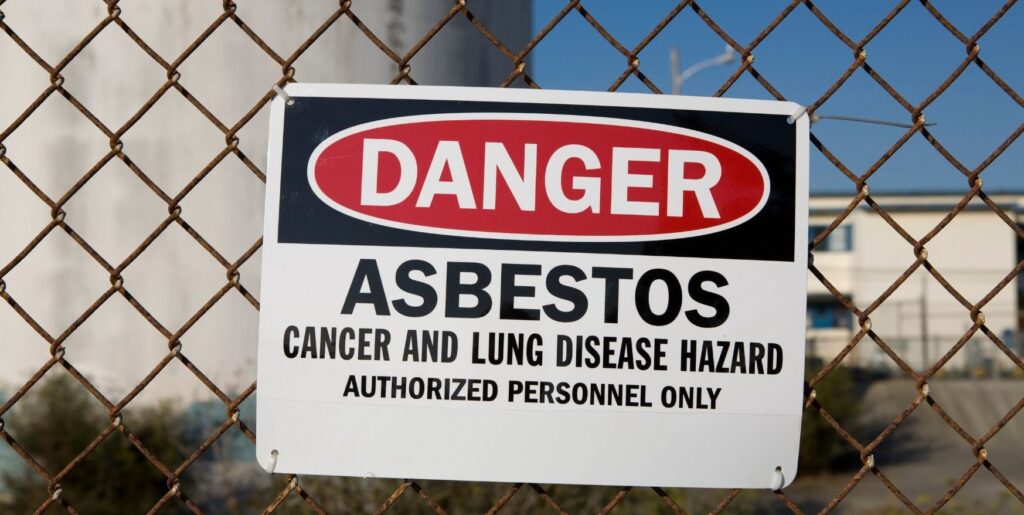
Financing And Assistance For Asbestos Removal
Asbestos once hailed for its heat resistance and durability, now stands recognized for its health hazards, including lung cancer and mesothelioma. The process of safely removing asbestos from homes and buildings can be costly, prompting the need for a thorough understanding of financing and assistance options available. In this comprehensive guide, we’ll explore government and local authority assistance programs, insurance coverage considerations, and practical tips for budgeting and saving on asbestos removal without compromising safety.
Government and Local Authority Assistance Programs
Many homeowners may not be aware that various government and local authority programs exist to aid in the financial burden of asbestos removal. These programs are designed to ensure public safety and reduce the exposure risk to asbestos. Eligibility and the extent of assistance can vary significantly depending on your location and the property’s condition. It’s essential to reach out to your local health department or environmental protection agency to inquire about available grants, loans, or subsidies specifically designed for asbestos abatement projects. These programs may cover a portion or, in some cases, the entirety of the costs associated with asbestos removal.
Insurance Coverage Considerations
Understanding the specifics of your insurance policy is crucial when dealing with asbestos removal. Most standard homeowners’ insurance policies do not cover asbestos removal unless the need arises due to a covered peril, such as a fire or storm damage. However, it’s worth reviewing your policy details or speaking with your insurance agent to confirm if any aspect of asbestos abatement could be covered. In some instances, additional coverage can be purchased to include asbestos removal, providing peace of mind and financial relief if asbestos is discovered during renovations or repairs.
Tips for Budgeting and Saving on Asbestos Removal
While prioritizing safety, there are ways to manage the costs associated with asbestos removal effectively:
Get Multiple Quotes: Prices can vary widely between contractors. Obtain several detailed quotes to compare the scope of work and costs. Ensure that the contractors are licensed and specialized in asbestos removal to guarantee a safe and efficient process.
Explore Do-It-Yourself Options: For small and non-friable (material that does not easily crumble) asbestos-containing materials, consider a DIY removal approach. However, it’s imperative to follow all safety guidelines and regulations, including proper protective gear and disposal methods. This option should only be considered after thorough research and adherence to local laws and guidelines.
Apply for Assistance Programs: As mentioned, seeking out government or local authority assistance can significantly reduce out-of-pocket expenses. Don’t overlook these potentially valuable resources.
Plan and Budget: If asbestos removal is a planned project, start setting aside funds as early as possible. A well-thought-out budget can help manage the costs more effectively and avoid financial strain.
Prioritize Safety Over Cost: While it’s natural to seek ways to save money, never compromise on safety. Choosing the cheapest option without considering the contractor’s expertise and safety practices could lead to higher health risks and potential legal issues.
In conclusion, navigating the financial aspects of asbestos removal demands a proactive approach, from seeking government and local authority assistance to understanding insurance coverage and employing cost-saving strategies. By thoroughly researching and planning, homeowners can ensure the safe removal of asbestos without undue financial hardship. Always prioritize safety and adhere to regulations, ensuring that the removal process protects both your health and your home.
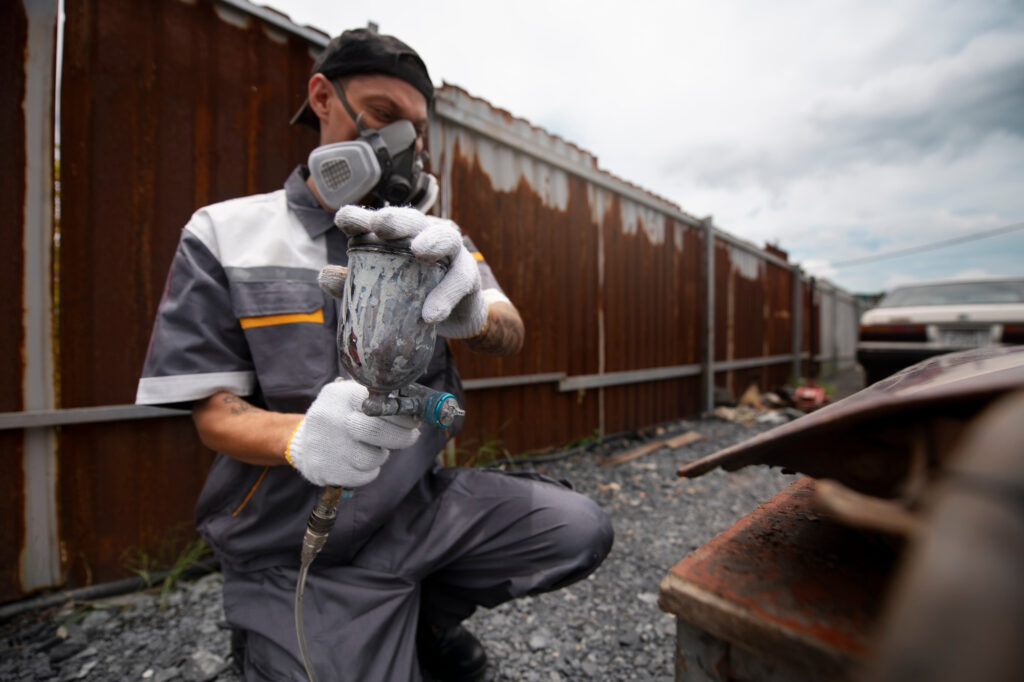
Choosing The Right Asbestos Removal Company
Choosing the right asbestos removal company is a critical step in ensuring the safety and well-being of occupants in any building, whether residential or commercial. Asbestos, a hazardous material once widely used in construction, poses serious health risks when disturbed. Therefore, selecting a professional service for its removal is not something to be taken lightly. Here is a comprehensive guide to help you make an informed decision when selecting an asbestos removal company.
What to Look for in a Professional Service
When it comes to asbestos removal, not all services are created equal. There are specific criteria you should consider to ensure you’re hiring a qualified and reliable company.
Licenses: The first thing to check is whether the company has the necessary licenses and certifications from relevant authorities. A licensed company adheres to strict regulations and standards, ensuring the safety and health of its workers and clients.
Reviews: In the digital age, customer reviews are a gold mine of information. Look for reviews on independent websites, social media, and the company’s website. Pay attention to comments about the company’s professionalism, timeliness, and how they handle unexpected issues.
Experience: Experience matters, especially in a field as specialized as asbestos removal. An experienced company will have encountered a wide range of scenarios and will be equipped to handle any challenges that arise during the removal process.
Questions to Ask Before Hiring
Before signing on the dotted line, there are several questions you should ask to ensure you’re making the right choice:
- What is your process for asbestos removal? Understanding the company’s method will give you insight into their professionalism and adherence to safety standards.
- Do you provide a detailed written estimate? A reputable company will always provide a detailed estimate, outlining the costs and the scope of work.
- Can you provide references? References from past clients can offer valuable insights into the company’s reliability and quality of work.
- What safety measures do you take to protect workers and clients? This question will help you gauge the company’s commitment to safety and compliance with regulations.
The Importance of Getting Multiple Quotes
It’s advisable to get quotes from several companies before making a decision. This not only gives you a range of prices but also allows you to assess different companies’ approaches to the job. Remember, the cheapest quote isn’t always the best. Consider the value offered by each company, including their professionalism, the quality of their previous work, and their adherence to safety standards.
By taking the time to research and ask the right questions, you can ensure you choose the right asbestos removal company for your needs. This not only guarantees the safety of everyone involved but also protects you legally and financially. Choosing the right company is about finding a balance between cost, experience, and reliability. Make your decision wisely, and ensure a safe and effective asbestos removal process.
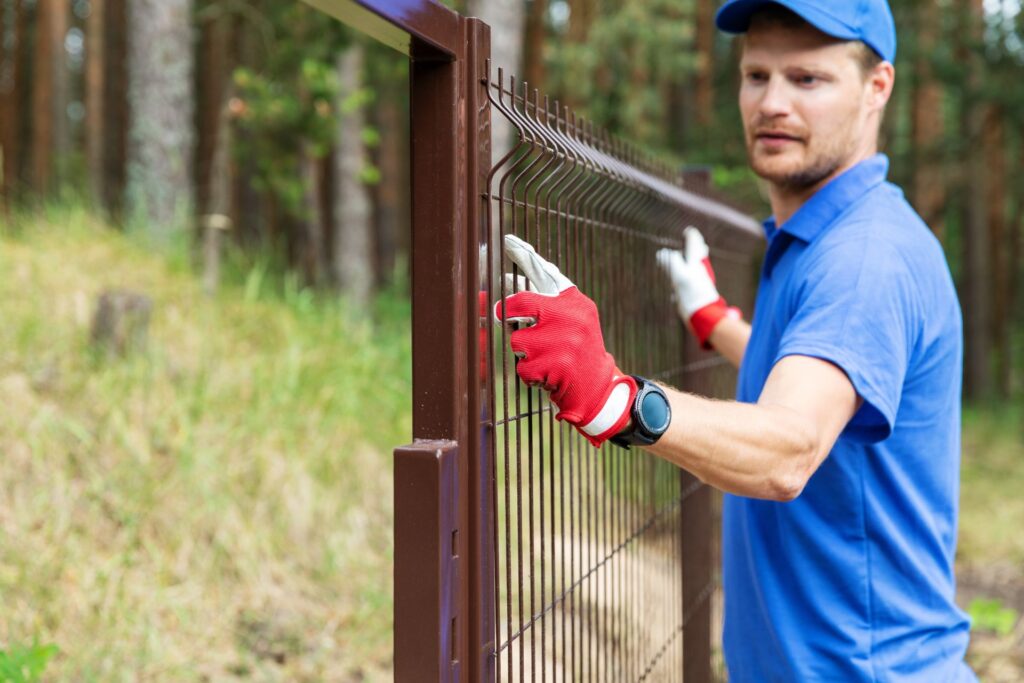
Preparing For Asbestos Fence Removal
Asbestos, once a popular construction material, is now recognized for its health risks, including lung cancer and mesothelioma. If your property has an old fence made from asbestos-containing materials, it’s crucial to approach its removal with utmost caution. This guide aims to equip homeowners with essential information on preparing for asbestos fence removal, ensuring a safe and efficient process.
How Homeowners Can Prepare the Site for Safe and Efficient Removal
1. Notification and Legal Compliance: Before any removal work begins, check with your local health or building department for regulations regarding asbestos removal. Some areas require a notification period or specific permits.
2. Hiring Professionals: Given the health risks associated with asbestos, hiring licensed professionals for the removal is strongly advised. They have the necessary equipment and training to handle asbestos safely.
3. Clearing the Area: Remove any objects that might obstruct the removal process, such as garden furniture, plant pots, and toys. Clearing the vicinity minimizes the risk of asbestos contamination on personal belongings.
4. Access for Removal Team: Ensure there’s clear access for the removal team to safely enter and exit the site with the asbestos materials. This might involve temporarily removing panels from other fences or clearing pathways.
5. Informing Neighbors: As a courtesy, inform your neighbors about the removal process, especially if the fence is adjacent to their property. This allows them to take any necessary precautions to protect themselves.
What to Expect on the Day of Removal
On the day of asbestos fence removal, the professional team will typically undertake the following steps:
Site Preparation: The area around the fence will be cordoned off to prevent unauthorized access. Signs indicating asbestos removal work will be displayed.
Safety Gear: The removal team will wear protective clothing and respirators to safeguard against asbestos fibers.
Wetting Down: To minimize airborne fibers, the asbestos-containing materials will be gently wetted down.
Careful Removal: The team will carefully dismantle the fence, avoiding any actions that may break the asbestos into smaller pieces, which can release more fibers into the air.
Waste Disposal: Asbestos waste will be securely bagged and labeled before being transported to a designated hazardous waste disposal facility.
Safety Precautions for Residents During the Process
While the professionals will handle the hazardous materials, residents should also take precautions:
Stay Indoors: During the removal, it’s safest for you and your family to stay indoors, keeping windows and doors closed to prevent asbestos fibers from entering your home.
Avoid the Removal Area: Even if you need to exit your home, avoid the immediate area of the removal. The professionals will have cordoned off this area for a reason.
Follow Professional Advice: The asbestos removal team may provide specific instructions based on your property’s layout and the project’s scope. It’s crucial to follow this advice closely.
Post-Removal Cleanup: After the fence is removed, the area may need a thorough cleaning to remove any residual asbestos fibers. Discuss with your removal team whether this is a service they provide or if another professional cleanup is necessary.
Asbestos fence removal is not a DIY project due to the significant health risks involved. By understanding how to prepare for the removal process and what safety measures to take, homeowners can ensure the project is carried out safely and efficiently. Always work with licensed professionals and follow local regulations to manage the risks associated with asbestos. This comprehensive approach to preparing for asbestos fence removal, emphasizing safety and efficiency, can guide homeowners through the process, minimizing the risk to themselves and their community.
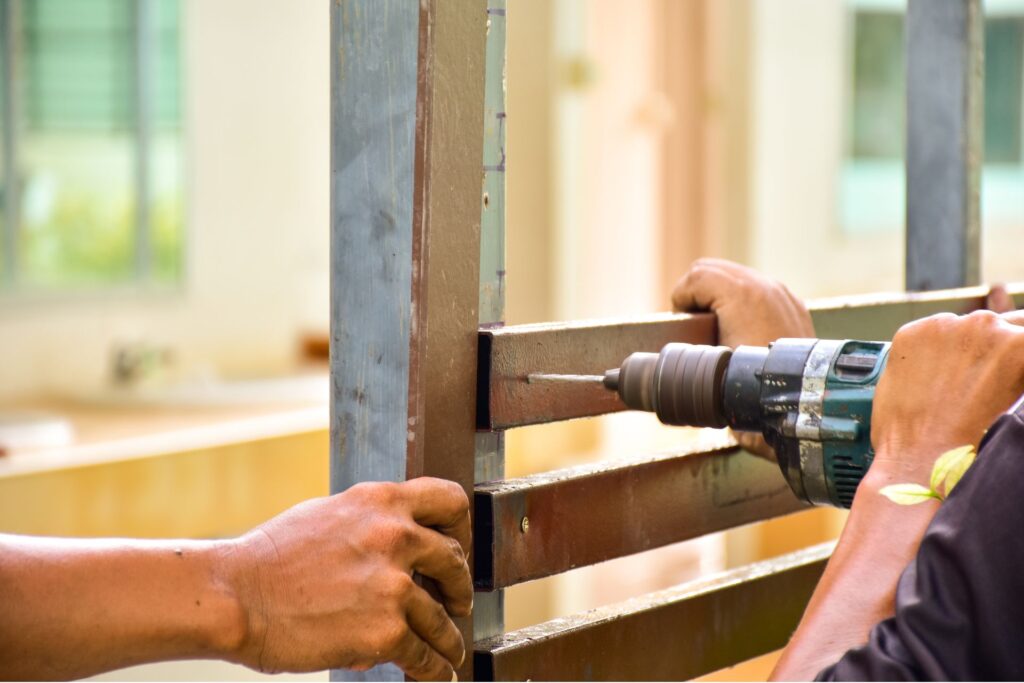
FAQs: About Asbestos Fence Removal Price
Conclusion
Wrapping up our discussion on the critical matter of asbestos fencing, it’s essential to highlight the importance of seeking professional help to tackle this issue, not only for the sake of maintaining property integrity but crucially for the protection of our health. The risks posed by asbestos, including serious respiratory conditions and other long-term health problems, cannot be overstated, making it imperative to act decisively for the safety of our homes and well-being. We strongly advocate for taking immediate steps by reaching out to licensed asbestos removal experts who are equipped with the necessary knowledge, tools, and legal clearance to safely handle and dispose of asbestos-containing materials. By doing so, you ensure a safe living environment, safeguard your family’s health, and contribute to the well-being of your community. Therefore, we encourage you to take this pivotal step: contact a professional today for a comprehensive evaluation and quote, securing peace of mind and a healthier future for yourself and those you care about in one fell swoop.
About the Author:
Mike Veail is a recognized digital marketing expert with over 6 years of experience in helping tradespeople and small businesses thrive online. A former quantity surveyor, Mike combines deep industry knowledge with hands-on expertise in SEO and Google Ads. His marketing strategies are tailored to the specific needs of the trades sector, helping businesses increase visibility and generate more leads through proven, ethical methods.
Mike has successfully partnered with numerous companies, establishing a track record of delivering measurable results. His work has been featured across various platforms that showcase his expertise in lead generation and online marketing for the trades sector.
Learn more about Mike's experience and services at https://theleadguy.online or follow him on social media:

